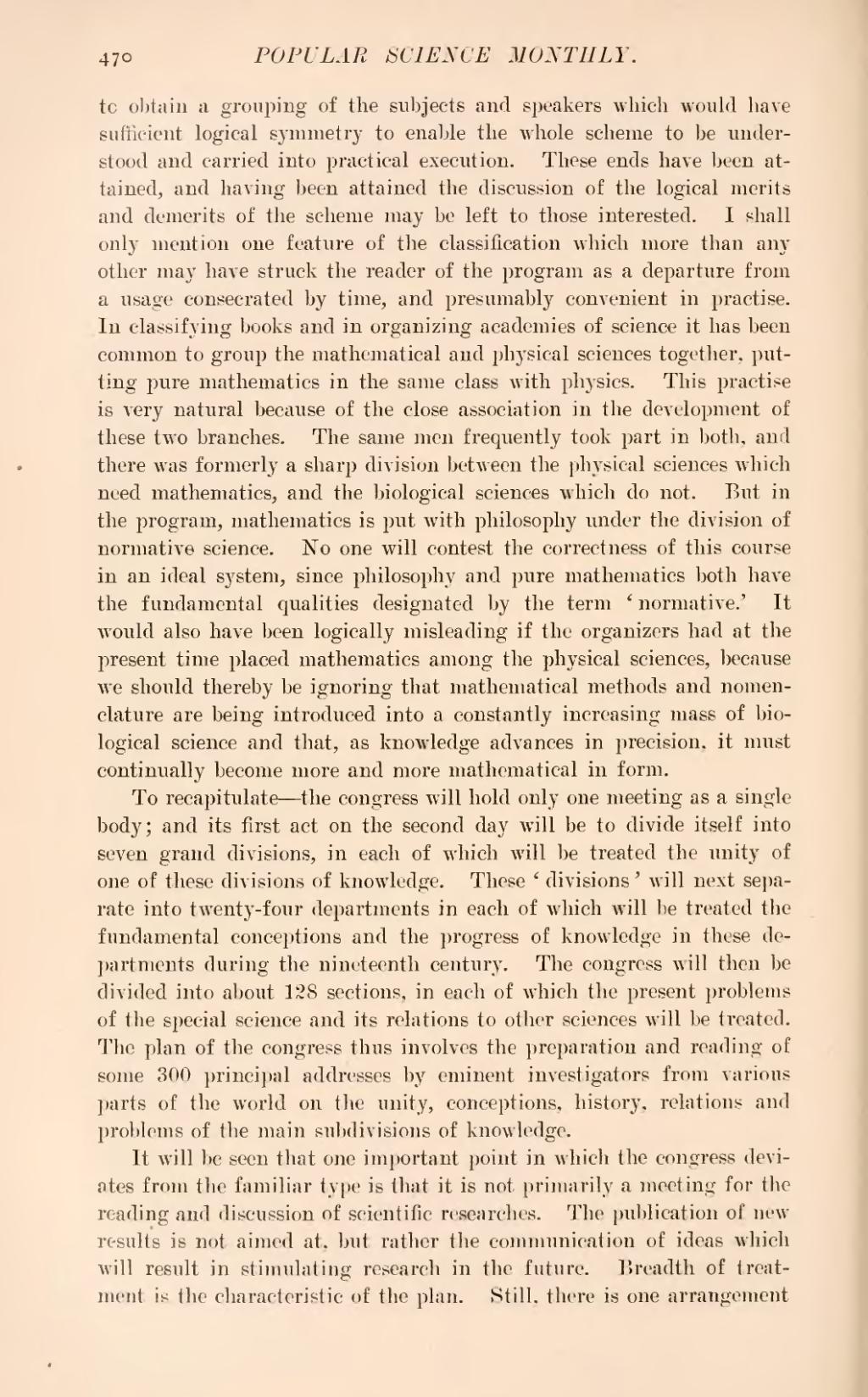tc obtain a grouping of the subjects and speakers which would have sufficient logical symmetry to enable the whole scheme to be understood and carried into practical execution. These ends have been attained, and having been attained the discussion of the logical merits and demerits of the scheme may be left to those interested. I shall only mention one feature of the classification which more than any other may have struck the reader of the program as a departure from a usage consecrated by time, and presumably convenient in practise. In classifying books and in organizing academies of science it has been common to group the mathematical and physical sciences together, putting pure mathematics in the same class with physics. This practise is very natural because of the close association in the development of these two branches. The same men frequently took part in both, and there was formerly a sharp division between the physical sciences which need mathematics, and the biological sciences which do not. But in the program, mathematics is put with philosophy under the division of normative science. No one will contest the correctness of this course in an ideal system, since philosophy and pure mathematics both have the fundamental qualities designated by the term 'normative.' It would also have been logically misleading if the organizers had at the present time placed mathematics among the physical sciences, because we should thereby be ignoring that mathematical methods and nomenclature are being introduced into a constantly increasing mass of biological science and that, as knowledge advances in precision, it must continually become more and more mathematical in form.
To recapitulate—the congress will hold only one meeting as a single body; and its first act on the second day will be to divide itself into seven grand divisions, in each of which will be treated the unity of one of these divisions of knowledge. These 'divisions' will next separate into twenty-four departments in each of which will be treated the fundamental conceptions and the progress of knowledge in these departments during the nineteenth century. The congress will then be divided into about 128 sections, in each of which the present problems of the special science and its relations to other sciences will be treated. The plan of the congress thus involves the preparation and reading of some 300 principal addresses by eminent investigators from various parts of the world on the unity, conceptions, history, relations and problems of the main subdivisions of knowledge.
It will be seen that one important point in which the congress deviates from the familiar type is that it is not primarily a meeting for the reading and discussion of scientific researches. The publication of new results is not aimed at, but rather the communication of ideas which will result in stimulating research in the future. Breadth of treatment is the characteristic of the plan. Still, there is one arrangement
